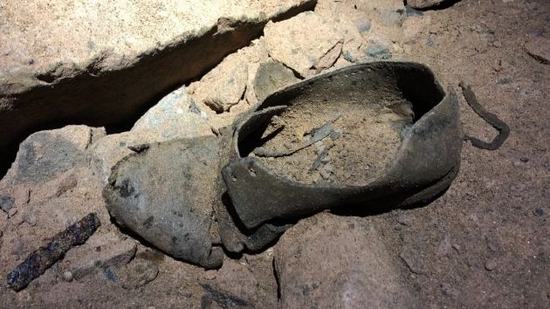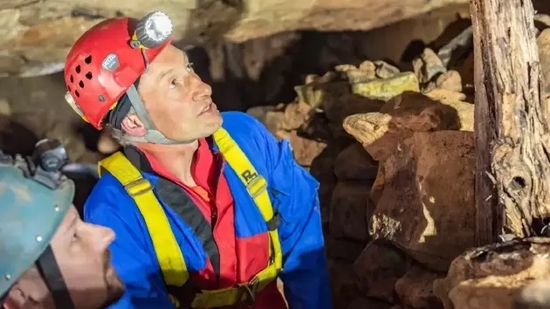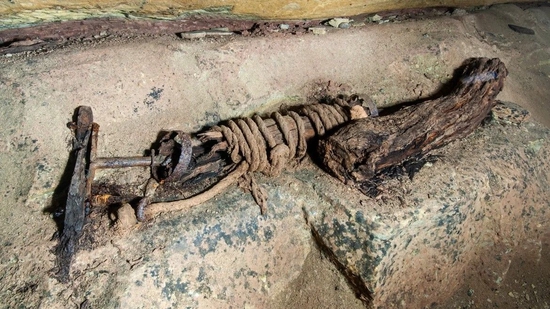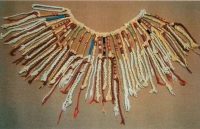The cobalt mine is located in a village called “Alderley Point” near Manchester. Cobalt can be used to make a bright blue dye commonly used in porcelain and glass production. Cobalt mining was a lucrative business in 19th-century England. But the mine, once owned by Sir John Thomas Stanley in the early 19th century, fell into disuse around 1810 as the price of imported cobalt became lower.

A leather shoe left in the mine.
Members of the Derbyshire Cavern Club have been exploring the cobalt mine since the 1970s, leasing access from the National Trust, a British heritage conservation charity. The spelunking team recently discovered some personal items in a previously unexplored area of the mine, a discovery that was like opening a time capsule.
“It is rare to find a mine in pristine condition with personal belongings and inscriptions,” Ed Coghlan, a member of the Derbyshire Cavern Club, said in a statement issued by the National Trust. We opened a window into the past, looking back to the last day the miners worked here.”

Pictured here is archaeologist Jamie Lund and Spelunker Club captain Ed Coghlan exploring the cobalt mine beneath Alderley Point.
In addition to leather shoes and pipes, explorers found a bowl embedded in the wall, perhaps superstitious miners wanted to thank this cobalt mine for providing them with high-quality ore. In addition, they also found a tool called a “winch”, which is used to lift and carry heavy objects.

The 200-year-old tool, called a winch, can be used to carry heavy loads.
Cogren wondered that such an important tool was left here by the miners, and the miners “were suddenly told to pack up and leave the site without any precaution.”
They also found a mysterious lettering with the initials “WS” followed by the date “August 20, 1810”.
“Our research has yet to figure out who this person is,” Coghlan points out. “Was someone trying to say: ‘I was here’? Or was the mine’s manager or owner visited this place? What? Or record the last day of the mine?”
Explorers also found nicks of other words and numbers on the walls. “We also found other basic letters and numbers in what appeared to be a rest area, as if someone was learning and practising writing.”
Now, as long as we sit at home, we can take a “tour” to the mine. To better expose the historic find to the public, the Derbyshire Cavern Club and the National Trust have teamed up with Christians Survey Inspection to create a virtual 3D model of the cobalt mine.
The team used a laser scanner in the cobalt mine to calculate the distance traveled by each laser beam based on the reflection of the laser beam. After doing this hundreds of times, a virtual 3D image of the interior of the cobalt mine was created. They also used remote-controlled equipment and other 3D imaging techniques to map the underground parts of the mine.
“Once we photographed and compiled the objects found in the cave, we left them in place and continued to be protected underground,” Jamie Lund, the National Trust, said in a statement. A time capsule that protects this once busy place for future generations to explore and appreciate.”



GIPHY App Key not set. Please check settings